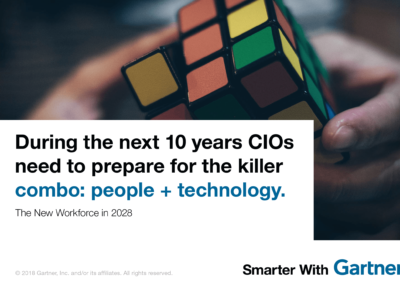How and when to involve key stakeholders to ensure a successful technology strategy.
The CIO of a large international company has a communication problem. In order to keep the technology moving forward, she needs the support of the business, but given the diversity and number of stakeholders, she’ll need an effective communication plan. But what does that mean?
“Strategy is at the heart of every enterprise, but most CIOs struggle to communicate effectively about that strategy,” said Christie Struckman, Gartner research director. “Most organizations do not have a clear approach to strategy development, making the communication of the strategy difficult and inconsistent.”
The CIO of the company will need to engage stakeholders ranging from the executive team and board of directors, to the business ecosystems. It will be her responsibility to educate or explain the strategy, emphasize the value of information and technology to that strategy, and generate excitement about the plan, despite the work that will need to be done.
She will be challenged to find the line between providing too much or too little information while ensuring all stakeholders have the information they need when they need it.
Identify the Stakeholders
“Different stakeholders will need to be engaged at different parts of the process and success depends on mapping the right stakeholders to the most appropriate discussions,” said Heather Colella, research vice president.
Learn More: How to Say No Assertively
Stakeholders will be interested for one of four reasons:
- They are responsible for getting the work done.
- They are accountable for the outcomes or results of the work.
- They need to be consulted while the work is being created.
- They need to be informed along the way as to the progress being achieved.
Generally, the stakeholders will be found in four groups: Executive boards or Board of directors, lines of business, IT organization, or the digital ecosystem.
Executive/Board of executives: Engage the executives and board of directors, as they are responsible for business strategy, fiscal stewardship, and risk management. Information and technology capabilities will require significant financial investment, and the CIO will need to be engaging with the team, if she is not a part of the executive team.
Lines of business: Reach out to strategic partners in the business departments such as marketing, operations, supply chain, human resources, and finance. Engaging with these strategic stakeholders will ensure that the business is aligned and in support of the strategy.
IT Organization: Work with the IT team, including direct employees, as well as contractors. Involve the employees as much as possible in the planning steps to ensure commitment and reduce resistance.
Ecosystem: The business ecosystem can include customers, partners, suppliers, universities and even competitor. The CIO should ensure these stakeholders are a part of the strategy conversation even though they haven’t been in the past.
Involve the Stakeholders
Even after the CIO has identified each of the stakeholders, it can be difficult to decide when to involve each one. However, a three-part framework will map out what the CIO needs to discuss with stakeholders, depending on the timeframe.
Long Term Planning: This planning covers the business context, goal and objectives, business capabilities, principles and measures of success. Each of the stakeholders will have different focuses and contributions to the main strategy, but all of them must be on board and aware. For example, the executive board should be a part of any investment or governance issues, while the IT organization will need a road map and timeframe for each technical capability.
Medium planning horizon: This planning will address required changes across enterprise information and technology such as mode of execution, governance, culture, people, and metrics. It’s key to engage stakeholders in effective dialogue during this stage. For example, the lines of business need to be aware of success measurements and the execution plan. The ecosystem will need to know the definition of success and the implications of how the changes will affect the ecosystem.
Short-term planning horizon: This is the detailed short-term departmental plans that align contributions and accountability to the overall goal. For example, the IT organization will need to know what training and development will be required and the ecosystem will need finalize service or partnership agreements .
Get Smarter
Client Research
Gartner clients can access the full framework in the research report A CIO’s Framework for Communicating Strategy.
Gartner CIO Leadership Forum
Gartner analysts, and industry leaders will discuss key issues facing the CIO during Gartner’s CIO conferences taking place March 19-21 in Hollywood, Florida, May 8-9 in Magaliesburg, South Africa, May 18-19 in Munich and June 6-8 in Toronto. You can follow news and updates from the event on Twitter using #GartnerCIO.
CIO Leadership hub
Visit Gartner CIO hub for complimentary research and webinars.










